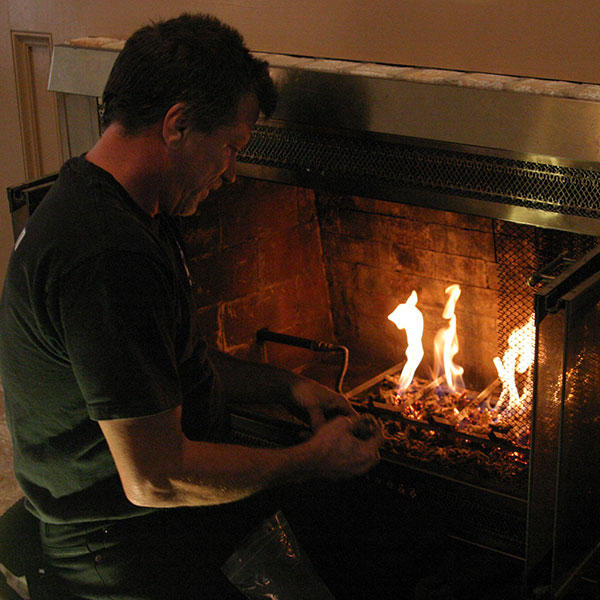All About Wood & Gas Fireplace Maintenance
The multifaceted task of home upkeep has many homeowners struggling over what to prioritize, and it helps to know that few tasks affect safety as much as fireplace maintenance. Chimneys may look sturdy and impenetrable, but they are susceptible to blockage, moisture damage, deterioration, and more. Fireplace maintenance is essential to keep your home and family safe. Whether you are gaining greater peace of mind or seeking to avoid unnecessarily high chimney maintenance costs, it is highly beneficial to learn all about fireplace maintenance.
 Why is Annual Fireplace Maintenance Important?
Why is Annual Fireplace Maintenance Important?
Fire safety experts at the Chimney Safety Institute of America (CSIA) and at the National Fire Protection Association (NFPA) agree that annual chimney inspections are essential. CSIA explains that when a CSIA-certified chimney sweep checks your heating system during a chimney inspection, potentially costly issues are identified. Problems such as leaks, cracks, and deterioration need to be addressed quickly so that the cost to repair them can be held to a minimum. Moisture intrusion causes most masonry damage, but it usually requires the expert eyes of a chimney expert to spot early signs of moisture damage.
Wood-Burning Fireplace Maintenance
Dangerous home fires caused by wood-burning heating appliances occur by the thousands every year. Dirty chimneys alone cause most of these devastating fires. Annual fireplace maintenance can help homeowners avoid fire hazards as well as life-threatening exposure to carbon monoxide.
Flue blockages and creosote buildup are red flags associated with potential danger. Actually, creosote is the primary cause of hazardous obstructions in the flue. Creosote is a highly flammable combustion byproduct deposited in the chimney flue with every wood-burning fire in the fireplace. Chimney fires can easily be started if an ember comes into contact with creosote in the chimney flue.
Deadly carbon monoxide is among the toxic fumes released by solid fuel-burning fires. Carbon monoxide can leak into homes if there is an obstruction in the chimney flue. In addition, if there is any level of deterioration in the chimney flue itself, out-of-control home fires and carbon monoxide exposure are among the life-threatening dangers. It is important to have carbon monoxide detectors in place and working properly before getting fires started in the fireplace.
Gas Fireplace Maintenance
Gas fireplaces are low-maintenance compared with wood-burning fireplaces. However, annual chimney inspections are just as important with gas-fueled fireplaces. Although there is no messy creosote, components of a gas fireplace must be checked to ensure continued safety. During an annual chimney and gas fireplace inspection, the functionality of the heating appliance is carefully checked. Valves and connections tend to weaken over time, and gas leaks could develop. The thermopile and thermocouple could become worn and may need to be cleaned. Ceramic logs also need to be checked.
Dangers associated with gas fireplaces include explosions and sudden fires that result from leaks and/or malfunctions. For example, if a pilot light is on and the gas is on but the fire isn’t burning, an explosion could occur.
Contact Guardian Chimney Sweep
The CSIA-certified chimney sweeps at Guardian Chimney Sweep specialize in and know all about fireplace maintenance. Over the years, we’ve seen that chimney and fireplace upkeep is safer and far less expensive than neglecting fireplace maintenance. We are dedicated to customer satisfaction. If you live in or near Houston or Conroe TX, contact us using our online form or call us today at one of the following numbers:
Toll-free: (888) 306-6069
Conroe: (936) 271-9781
Houston: (713) 401-2011

 Tap to Call Now
Tap to Call Now